One thing that often confuses rookie players is the difference between a baseball glove and a mitt. I mean, they look pretty similar and also serve more or less the same purpose, right? Well, not necessarily.
Despite what some people may say, baseball gloves and mitts are miles apart in design. How so? Let’s look at the answers here!
Baseball Mitt vs Glove – Difference Between Them
Back when baseball was first invented, people used to play the game without any gloves or hand protection. Needless to say, hand injury was also a lot more common during that time. These days, however, you cannot even imagine a game of baseball where the players are not wearing proper hand gear.
As the game improved with time, so did the type of gear that you use to play it. The gloves or mitts that MLB professionals use these days are designed to enhance the player’s performance on the field while keeping him safe against injuries.
If you have been playing baseball for some time, you would already know that the defensive team has five distinct positions consisting of the pitcher, the first baseman, the catcher, the infielders, and the outfielders. And the thing is, whether you go with a mitt or a glove depends on the position you play.
Not only that, depending on your position, the type of glove or mitt you choose will also be different. While a casual or a youth player might not care much for the different types of gloves or mitts options, someone who wants to go pro needs to learn as much as he can about these things.
So, if you want to get a clear understanding of the difference between baseball mitts vs gloves, I will teach you everything there is to know about them in this article.
Baseball Mitt vs Glove (Comparison Chart)
In a hurry? Just take a quick look at the comparison table I have here. This should paint a pretty decent picture for you.
| Factors | First Baseman Mitt | Catcher’s Mitt | Infielder Glove | Outfielder Glove | Pitcher Glove |
| Webbing | Basket Web | Basket Web | I-web (popular), H-web, Dual-post, | H-web (popular), I-web, Dual-post | Modified Trapeze, Basket Web, Closed Web |
| Padding | Thick | Thick | Light to Moderate | Light to Moderate | Light to Moderate |
| Size | 12-13 inches (adult) | 32-35 inches (adult) | 10.5-11.5 inches (adult) | 12-13.5 inches (adult) | 10.5-11.5 inches (adult) |
| Deep | Deep | Shallow | Moderate | Shallow (depends on preference) | |
| Weight | Heavy | Heavy | Light | Light | Light |
Is a Baseball Glove Called a Mitt?
Some people have a misconception that a baseball mitt and a glove are the same. But the truth is, while they share a lot of similarities at first glance, once you take a closer look at their design, you will find a lot of significant differences.
A baseball glove and a mitt are miles apart in design and serve different purposes. And once you understand their purpose, you will have no trouble differentiating between the two hand gears.
Key Features of a Baseball Mitt
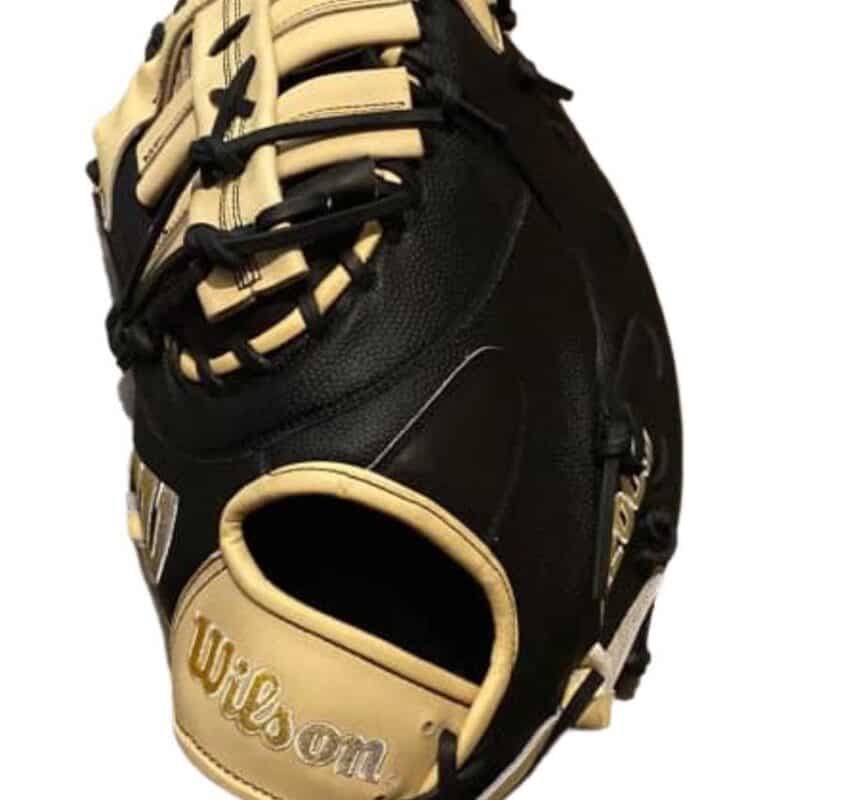
A baseball mitt is worn only by the catcher and the first baseman. No other position is allowed to use mitts instead of gloves. The main difference between this and a baseball glove is that a baseball mitt comes with a webbed finger design. Mitts also typically come with a deeper pocket and heavier padding.
A baseball mitt is designed to give the player maximum control over the caught ball. Thanks to the deeper pocket, you will be able to scoop up ground balls and short hops much easier compared to a baseball glove.
Besides, the deeper pocket and webbed design do not get in the way as the players using a mitt will not have to throw the ball anyways. The main concern of the catcher and the first baseman is to catch the ball, not throw it.
Naturally, as the players in these two positions catch more balls than other fielders, they require better protection against ball impacts. That is why a catcher’s mitt almost always comes with a thicker level of padding compared to baseball gloves used by other players.
However, depending on whether you are a first baseman or a catcher, the type of mitt that you wear would be different.
· First Baseman Mitts
The job of a first baseman is to scoop out ground balls or poorly thrown balls from the dirt. So, the mitts that they use are typically longer and have deeper pockets to make things easier for them. The deep pocket in a first baseman’s mitt helps them securely catch the ball and hold on to it.
First baseman mitts have an open-style webbing to prevent picking up dirt while scooping up ground balls. They are a lot smaller compared to catcher’s mitts but compared to gloves used by other positions; they are a lot longer and wider.
Typically, adult first base mitts range from 12 to 13 inches in length. But the length in youth first base mitts ranges from 9 to 10 inches.
· Catcher Mitts
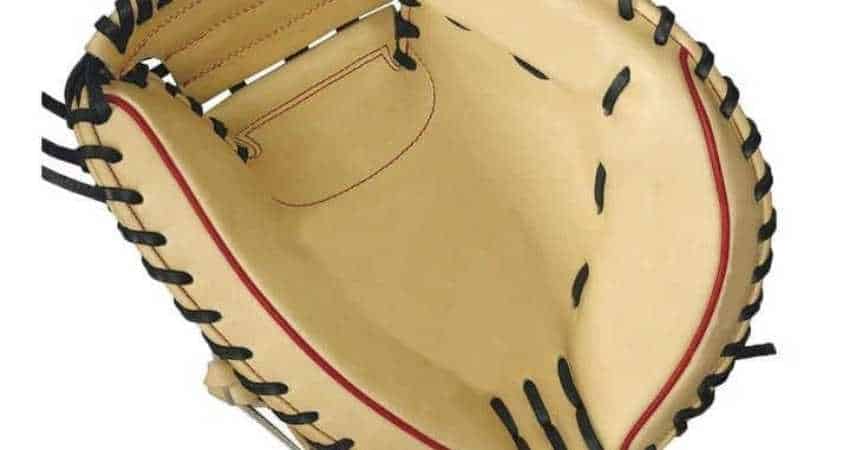

The mitts used by catchers are a lot thicker and bigger compared to first base mitts. Since catchers need to catch those fast knuckleballs constantly, they need better protection for their hands. That is why their mitts feature heavier padding compared to the mitts and gloves used by other players.
In addition, these mitts mostly feature a closed-style webbing and a claw-shaped design. That, along with a deeper pocket than normal, helps the catcher secure the ball in their mitts and keep it in place.
There is another little-known reason why catcher’s mitts are designed to be so big; they provide a bigger target for the pitcher. While the first baseman’s mitts are measured by length, a catcher’s mitt is measured by its circumference.
An adult catcher’s mitts typically have a minimum circumference of 32 inches. However, younger catchers prefer going with a 31-inch mitt or smaller as it is easier to control.
Key Features of a Baseball Glove
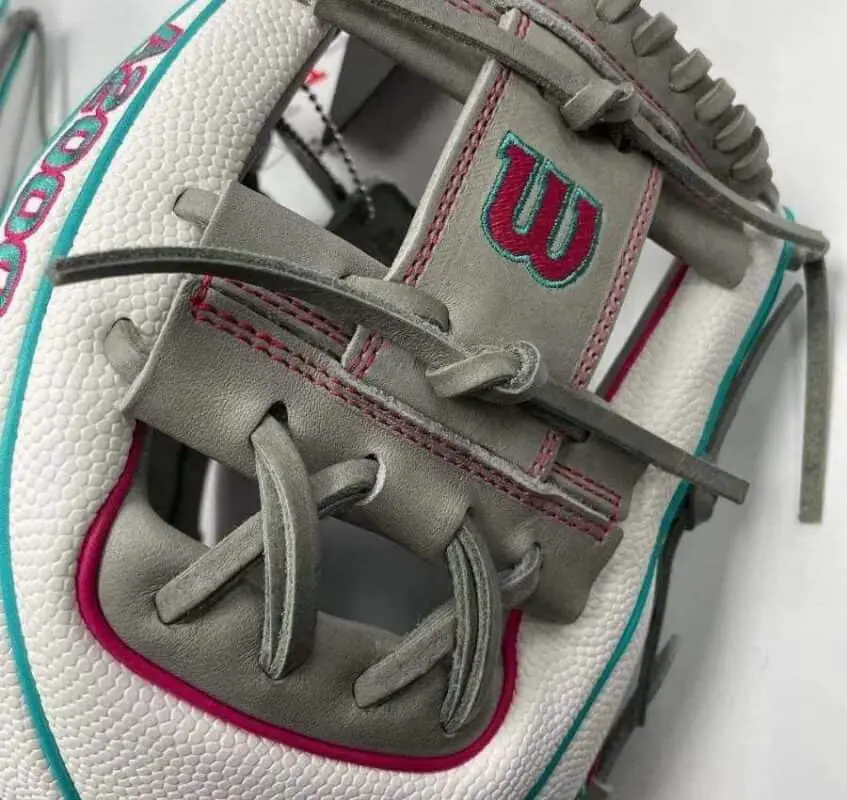

Baseball gloves are worn by all the players of the defending team except the first baseman and the catcher. This means pitchers, outfielders, and infields will wear gloves on the defending team.
Typically, these gloves are made with leather, but the quality of the leather can vary from one option to another. The goal of a top-tier baseball glove is to make it easier for the player to catch the balls, whether it is hit by a batter or thrown by a fielder. But they also need to throw the ball, unlike catchers or first basemen.
That is why baseball gloves feature separated fingers instead of closed webbing and also have a shallower pocket. The depth and webbing design can vary depending on the position. A baseball glove consists of five major parts; web, palm, lacing, heel, hinge, and wrist adjustment.
While the basic design of different baseball gloves is similar, there are some slight variations here and there depending on the position that you are playing. And if you take these differences into account, a baseball glove can be categorized into three types, pitcher’s gloves, infielder’s gloves, and outfielder’s gloves.
· Pitcher Gloves
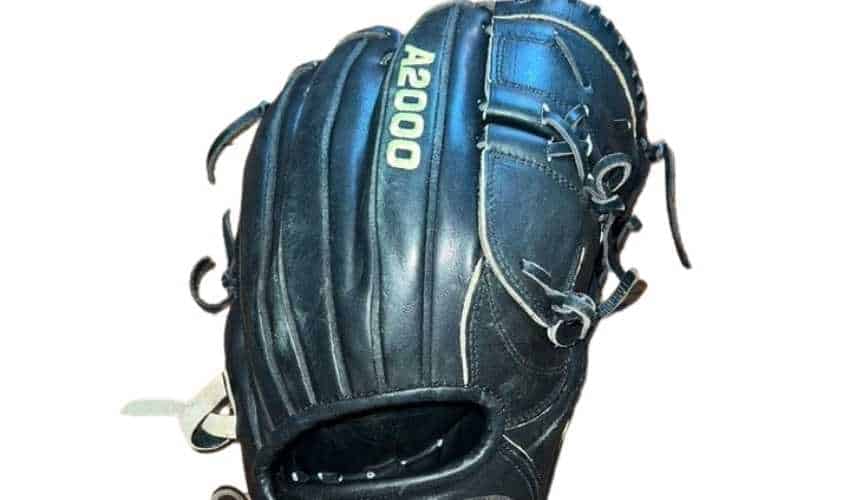

The glove that a pitcher uses typically comes with a closed web. But the reason behind this design is not for better grip but rather to conceal the ball and the grip as he holds it in his hands. This allows him to hide the pitch from the batter and try to catch him off guard.
Their gloves also don’t have as much padding as the rest of the fielder’s gloves, as they rarely have to catch a batter’s ball. Pitchers tend to prioritize their comfort when choosing the size of the glove. The depth of the glove’s pocket also varies depending on the preference of the pitcher.
· Infield Gloves
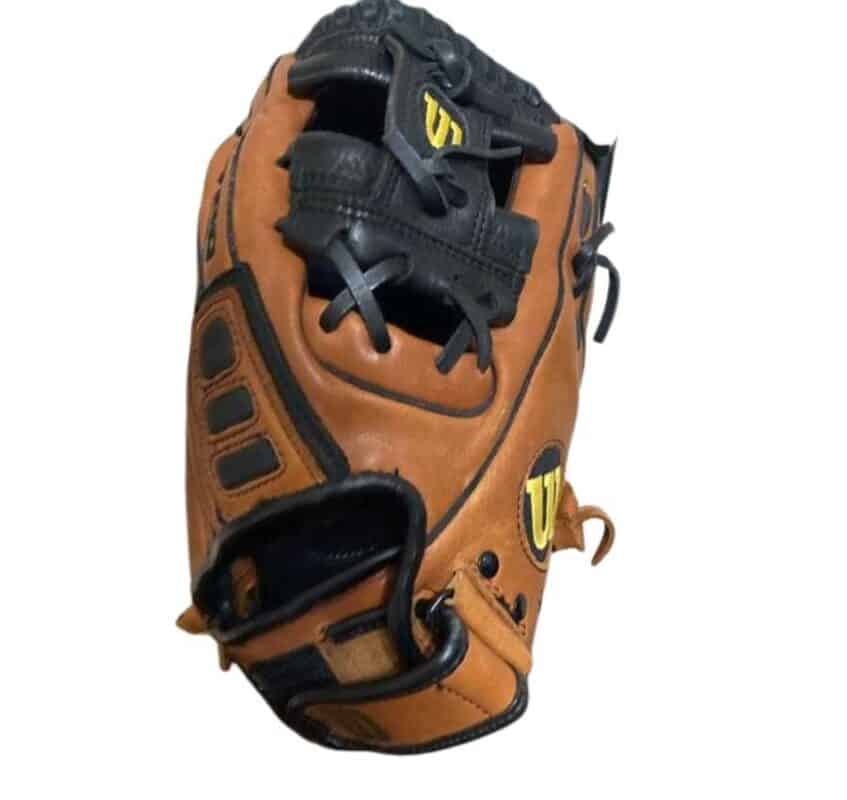

Infielders usually prioritize speed over comfort and security and usually go with smaller gloves compared to other positions. An infielder glove typically comes with five distinct fingers and has a much shallower pocket compared to mitts.
This allows the player to react quickly to the batted ball and helps them catch and retrieve it faster. I have seen some third-basemen players use a closed-web infield glove, but the shortstop or the second-baseman always goes with open webbing.
The level of padding on the glove depends mostly on the preference of the player. Typically, an infield glove for an adult ranges from 10.5 to 11.5 inches in length. Youth players, on the other hand, go for 9- to 10-inch gloves.
· Outfield Gloves
With the pitcher and infield gloves covered, let me talk a bit about the outfield gloves. Players in this position often have to catch high-speed fly balls. Naturally, they would want a glove that makes catching far-field balls easier.
That is why outfielder’s gloves typically come with deeper pockets that let them catch and secure the ball easily. In addition, these gloves are fairly long to help the player reach further, trying to catch the ball.
Instead of a closed webbing design, though, outfielder’s gloves often come with an open webbing. This allows the player to keep an eye on the incoming ball through the open portions of the gloves while offering some protection against sunlight or stadium lights.
Adult outfielder gloves range from 12 to 13 inches, while youth players go with 11- or 12-inch gloves.
Differences Between Baseball Gloves and Mitts
As you can see, there are quite a few major differences between a baseball glove and a baseball mitt. And while you may be able to get away with using a mitt instead of a glove, in an organized sports event, you need to make sure you are equipped with the right gear for your position.
Baseball gloves typically come with separated fingers to make scooping out the balls easier. However, mitts have a closed-finger design that enhances your catching ability and helps you securely hold them in place.
Another key difference between the two is that baseball mitts are generally larger, wider, and have deeper pockets than baseball gloves. The larger size of the mitt allows better ball control as you catch it. On the other hand, the shallow pocket of a baseball glove makes it easier for the player to throw the ball.
Lastly, baseball mitts come with a thicker layer of padding. Since the catcher needs to catch those fast pitches, they naturally need more protection against the ball’s impact. Outfielders, infielders, and pitchers prefer flexibility over protection, and that is why their gloves do not have as much padding.
Final Thoughts
Whether you go with a baseball mitt or a glove entirely depends on your position. Your playstyle or preference typically has nothing to do with it. The rules dictate that only the first basemen and the catcher are allowed to wear mitts, while the rest of the defensive players need to wear baseball gloves.
Sure, you can choose which mitt or glove you want to buy, but that’s about the extent of your freedom. So, if you are a catcher, going with infielders’ gloves is not going to cut it; you would need to get a high-end catcher’s mitt to play with it.
Hopefully, my in-depth look at the differences between a baseball mitt and a glove could help you understand what sets them apart. Good luck!
